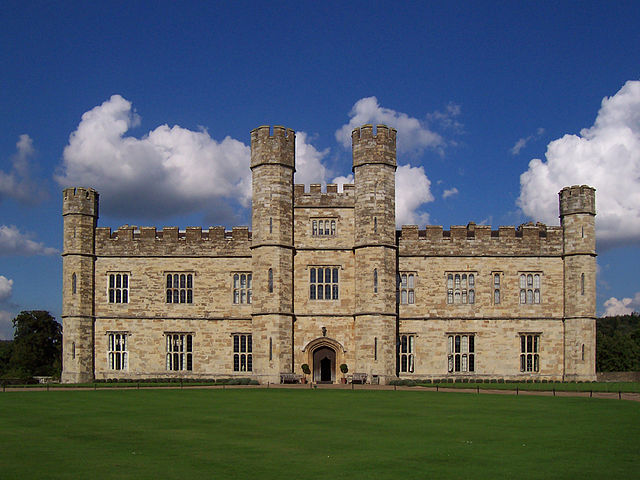Top Qs
Timeline
Chat
Perspective
Cheney Culpeper
British landowner From Wikipedia, the free encyclopedia
Remove ads
Sir Cheney Culpeper[1] (1601–1663) was an English landowner, a supporter of Samuel Hartlib,[2] and a largely non-political figure of his troubled times,[3] interested in technological progress and reform. His sister Judith was the second wife of John Colepeper, 1st Baron Colepeper.
Remove ads
Landowner
He was the eldest son of Sir Thomas Colepeper of Hollingbourne, Kent and Elizabeth Cheney of Guestling, Sussex. After legal training,[4] he was knighted in 1628. He had an estate at Great Wigsell, Salehurst, East Sussex, which he bought from his brother-in-law Lord Colepeper, but had possession of it only briefly.[5] He bought Elmley Castle, Worcestershire in 1650.[6] He lived mainly at Leeds Castle, which his father had purchased for his sons in 1632. Being later disinherited by his father, he became heavily indebted. During the English Civil War, he was a convinced Parliamentarian, unlike his father who was a staunch Royalist, and sat on the County Committee for Sequestration. This clash of opinions no doubt explains his father's decision to disinherit him. He never regained possession of his estates, and died a ruined man only a year after his father.

Remove ads
Family
He married his cousin Elizabeth Stede, daughter of Sir John Stede of Harrietsham (the common ancestor was Joan Pordage, who married firstly William Stede and secondly Francis Colepeper). They had two surviving daughters, Cicely, who married William Cage (died 1676) of Milgate House, Thurnham, a lawyer, by whom she was the mother of the politician William Cage (died 1738), and Elizabeth, fourth wife of Christopher Milles of Herne Bay. Elizabeth was still alive in 1710, when we found her corresponding with her cousin, the writer Elizabeth Freke (who was the daughter of Sir Cheney's sister, the elder Cecily).[7]
Remove ads
Hartlib circle
Of the Hartlibians, he had most to do with Benjamin Worsley. He was interested in alchemy,[8] but most of all in agricultural topics.[9] While on the Parliamentarian side, he was a moderate, against the more theocratic tendencies.[10] He had contacts in Parliament;[11][12] but insufficient influence to make a real difference in the attitude to Hartlib's projects.[13]
References
- Stephen Clucas, The correspondence of a XVII-century 'chymical gentleman': Sir Cheney Culpeper and the chemical interests of the Hartlib circle. Ambix 40, 1993. p147-170
- M. J. Braddick and M. Greengrass, editors, The Letters of Sir Cheney Culpepper 1641-1657 edited by in Seventeenth Century Political and Financial Papers, Camden Fifth Series volume 7 (1997)
Notes
External links
Wikiwand - on
Seamless Wikipedia browsing. On steroids.
Remove ads